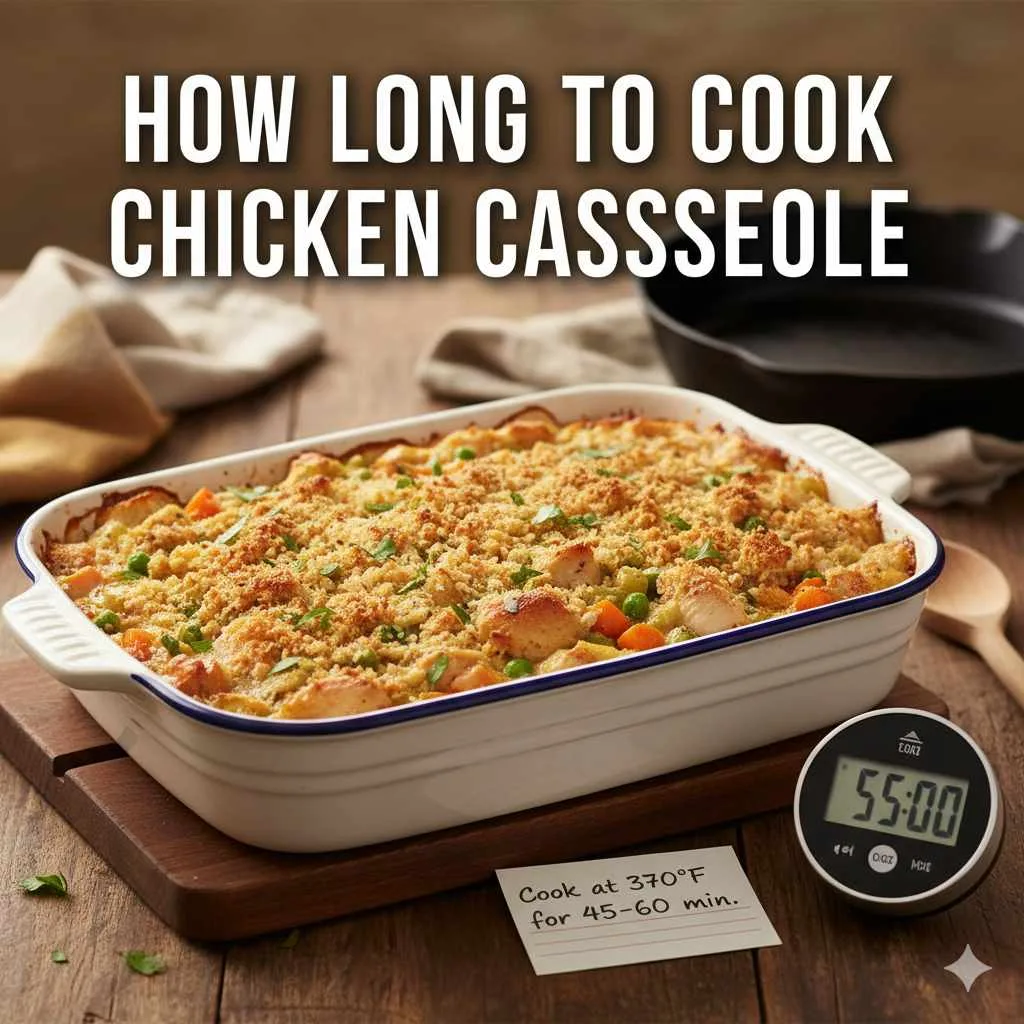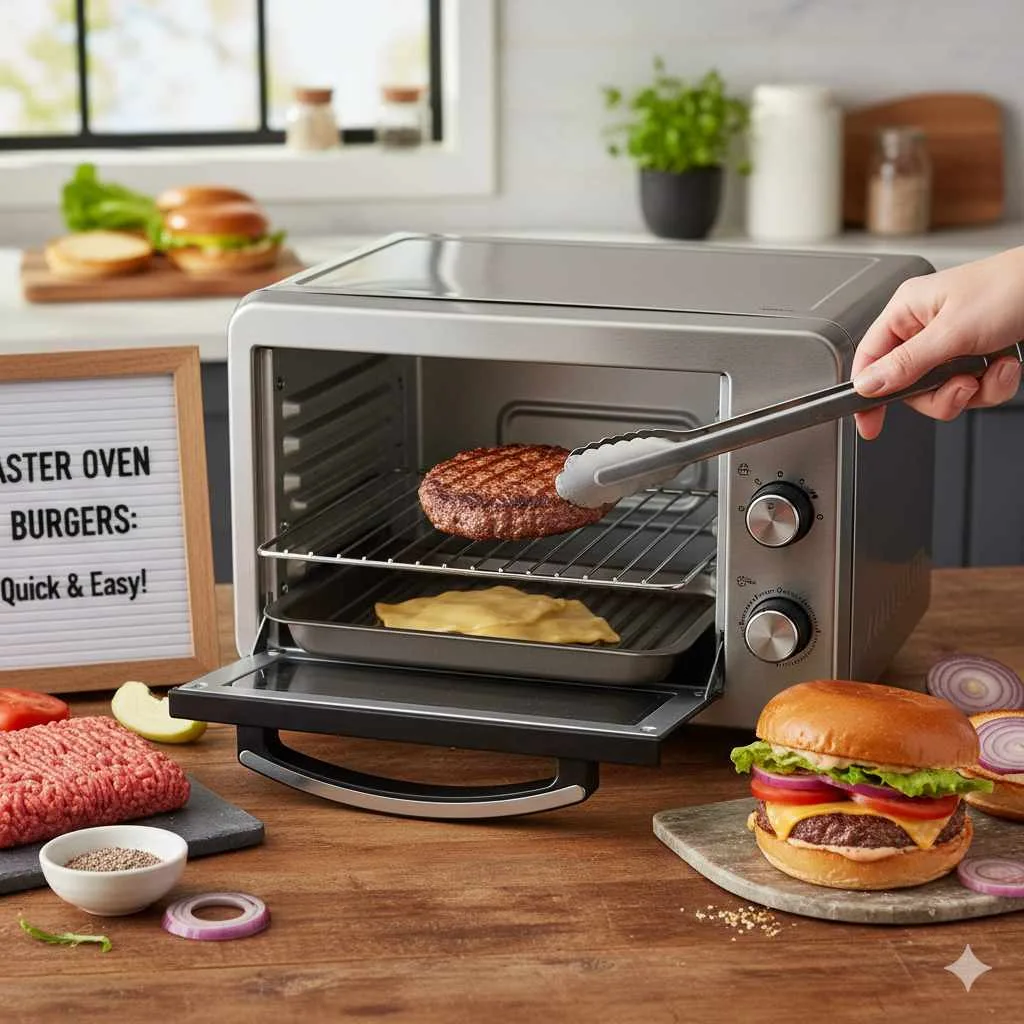Quick Summary:
Chicken casserole typically bakes for 25-45 minutes at 375°F (190°C) once assembled. Cooking time varies based on ingredients, dish size, and whether the chicken is pre-cooked. Always check for an internal temperature of 165°F (74°C) for food safety.
Chicken casserole is a dinner hero – comforting, delicious, and often a lifesaver on busy weeknights. But a common sticking point for many home cooks is figuring out just how long to bake it to golden perfection. Too little time, and you risk undercooked chicken or a runny sauce. Too much, and your casserole can turn dry and unappetizing. It’s a culinary conundrum that can leave anyone feeling a bit stressed.
Don’t worry! Achieving a perfectly cooked chicken casserole is simpler than you might think. We’ll walk through the essential tips and tricks to ensure your casserole is bubbly, heated through, and irresistibly delicious every single time. Get ready to become a casserole-cooking pro!
Understanding the Variables: What Affects Casserole Cook Time?
Before we dive into specific times, it’s helpful to understand what makes one casserole bake differently from another. Think of it like styling a room – so many elements come together to create the final look! In the kitchen, these factors are just as important for delicious results.
Several key elements influence how long your chicken casserole needs in the oven:
- Ingredient Temperatures: A casserole made with chilled, raw ingredients will need longer to heat up than one using pre-cooked chicken and room-temperature components.
- Raw vs. Pre-Cooked Chicken: This is a big one! If you’re using raw chicken pieces, they need dedicated time to cook through. If your casserole mainly uses leftover cooked chicken, you’re essentially just heating everything and melting cheese, which takes less time.
- Size and Depth of the Baking Dish: A deep, narrow casserole dish will take longer to heat up thoroughly than a shallow, wider one, even if they hold the same volume. Heat needs to penetrate from the top down.
- Type of Casserole: Creamy, dense casseroles with lots of pasta or rice might absorb more liquid and require a bit more baking time to ensure everything is tender and heated through.
- Oven Performance: Ovens can be finicky! Some run hotter, while others run cooler. Knowing your oven and using an oven thermometer can be incredibly helpful. You can learn more about oven accuracy from the National Institute of Standards and Technology (NIST) for insights into precise measurements.
- Toppings: A thick layer of breadcrumbs, cheese, or crispy onions will take time to brown and crisp up, adding to the overall bake time.
By considering these factors, you can adjust your cooking time estimates and get closer to that perfect bake.

The Golden Rule: Internal Temperature is Key
While recipes provide guidelines, the most reliable way to know if your chicken casserole is safely and perfectly cooked is by checking its internal temperature. This isn’t just about taste; it’s crucial for food safety!
According to the United States Department of Agriculture (USDA), all poultry, including the chicken in your casserole, must reach an internal temperature of 165°F (74°C). Casseroles, especially those containing raw meat, need to be heated through to this temperature to kill any harmful bacteria.
How to Check the Temperature:
- Use an instant-read food thermometer.
- Insert the thermometer into the thickest part of the casserole, avoiding any bones or the edges of the dish.
- If your casserole contains chunks of chicken, try to test a few different pieces to ensure they are all cooked.
- Give it a minute for the reading to stabilize.
Don’t guess – a thermometer is your best friend for accurate results!
General Baking Times and Temperatures for Chicken Casseroles
Most chicken casseroles are baked in a standard oven range. Consistency in temperature and understanding typical timelines will build your confidence.
Standard Baking Temperature
The most common baking temperature for chicken casseroles is 375°F (190°C). This temperature is hot enough to cook the chicken thoroughly and brown the toppings while allowing the creamy base to heat through without drying out too quickly.
Typical Baking Times Based on Chicken Type:
Here’s a general guide, but remember to always verify with a thermometer:
| Type of Chicken Used | Estimated Baking Time (at 375°F/190°C) | Notes |
|---|---|---|
| Fully Cooked/Pre-Cooked Chicken (e.g., rotisserie, leftover baked chicken) | 20-30 minutes | This is primarily to heat everything through and melt cheese/brown toppings. Focus on bubbly edges and melted top. |
| Raw, Diced/Chunked Chicken (e.g., chicken breast, thighs) | 30-45 minutes | Ensure chicken is cooked through to 165°F (74°C) and the casserole is bubbling. May require covering initially to cook chicken evenly. |
| Raw, Shredded Chicken (cooked briefly before assembling or simmered in sauce) | 25-35 minutes | Shredded chicken cooks faster. Ensure the base is heated and sauce is bubbly. |
Remember, these are estimates. A thermometer is your ultimate guide.
Step-by-Step: How to Bake Your Chicken Casserole to Perfection
Let’s break down the actual baking process. It’s a straightforward sequence that leads to a delicious result, much like following a simple decor plan to update a room.
Step 1: The Preheat
Always start by preheating your oven. This ensures that when you place your casserole inside, it begins baking immediately at the correct temperature. An oven that takes too long to heat up can result in uneven cooking.
- Set your oven dial to 375°F (190°C).
- Allow at least 10-15 minutes for the oven to reach its target temperature.
- An oven thermometer can confirm accuracy.
Step 2: Assemble Your Casserole
Layer your ingredients according to your recipe. Whether it’s pasta, rice, vegetables, sauce, and chicken – get it all into your baking dish.
Step 3: Cover or Uncover? (The Great Debate!)
This often depends on your recipe and what you want for the final topping. Here’s a general guideline:
- If using raw chicken pieces: It’s often best to cover the casserole with foil for the first 20-25 minutes of baking. This traps steam and heat, helping the raw chicken cook through evenly without drying out the rest of the casserole.
- If using pre-cooked chicken: You can often bake uncovered from the start, especially if your goal is a golden, crispy topping.
- For a crispy topping regardless of chicken type: Uncover the casserole for the last 10-15 minutes of baking.
Tip: Lightly grease the underside of your foil with cooking spray or olive oil to prevent cheese and other toppings from sticking.
Step 4: The Bake
Place your assembled casserole into the preheated oven.
- Bake for the estimated time based on your ingredients (refer to the table above).
- Start checking around the lower end of the time range.
Step 5: The Check for Doneness
This is where you confirm it’s ready!
- Visually: Look for bubbling around the edges. The sauce should be heated through, and any topping should be golden brown.
- Thermometer Test: As mentioned, insert an instant-read thermometer into the thickest part of the casserole. Ensure it registers 165°F (74°C).
- Taste Test (Carefully!): If you’re unsure, carefully spoon out a bit from the center to check consistency and ensure ingredients are cooked.
Step 6: The Rest
This is a crucial, often overlooked step for any baked dish, not just casseroles! Letting your casserole rest for 5-10 minutes after it comes out of the oven allows the bubbling sauce to settle and thicken slightly, making it easier to serve and preventing it from being too runny.
Troubleshooting Common Casserole Cooking Issues
Even with the best intentions, sometimes things don’t turn out exactly as planned. Here are a few common hiccups and how to fix them, adding to your confidence in the kitchen!
My Casserole is Still Runny
Cause: Not baked long enough, too much liquid, or not allowed to rest.
Solution: Return to the oven, uncovered, for another 10-15 minutes. If it’s still too liquid, and it’s already cooked through, you can try thickening the sauce by making a quick slurry (1 tbsp cornstarch mixed with 2 tbsp cold water) and stirring it into the hot casserole, then baking for a few more minutes until thickened. Next time, perhaps reduce a liquid ingredient slightly or ensure it bakes until bubbly around the edges.
My Casserole is Dry on Top
Cause: Baked too long uncovered, oven too hot, or not enough moisture in the recipe.
Solution: If the inside is still moist, you can try covering the casserole with foil for the last 10-15 minutes of baking to trap moisture. Alternatively, you can gently spoon a little extra sauce, broth, or even water over the dry spots. For future recipes, consider covering it earlier in the baking process or reducing the oven temperature slightly.
My Chicken Isn’t Cooked Through
Cause: Not baked long enough, pieces were too large, or casserole was not covered when cooking raw chicken.
Solution: This is the most critical issue to address for food safety. If the chicken is not at 165°F (74°C), it must go back into the oven. Cover it tightly with foil to help it steam and cook through without further drying out the rest of the dish. Once the chicken reaches the safe temperature, check the rest of the casserole. If the chicken was the only issue, you may be able to serve once it’s cooked.
Prevention: Always cut raw chicken into smaller, uniform pieces for casseroles and ensure you cover the dish if the recipe calls for it while cooking raw chicken.
Tips for Freezer-Friendly Casseroles
Casseroles are fantastic make-ahead meals. Knowing how to store and reheat them is part of the whole picture!
- Bake and Cool Completely: Allow the casserole to cool entirely on a wire rack before freezing. This prevents ice crystal formation which can lead to a watery dish upon thawing.
- Freezer-Safe Containers: Use airtight, freezer-safe containers or heavy-duty aluminum foil. Tightly wrap the casserole to prevent freezer burn.
- Label: Always label your frozen casseroles with the contents and the date.
- Reheating from Frozen: This will require a longer bake time. Generally, reheat at 350°F (175°C) until heated through. For a 9×13 inch casserole, this could take 60-90 minutes or even longer. Cover with foil for most of the baking time, removing it for the last 15-20 minutes to brown the top. Always check the internal temperature to ensure it reaches 165°F (74°C).
- Thawing: For best results (and to ensure even cooking), thaw the casserole in the refrigerator overnight before reheating.

FAQ: Your Chicken Casserole Questions Answered
Q1: Can I use different types of pasta or rice in my chicken casserole?
A: Yes! Most recipes are adaptable. Just ensure you cook pasta or rice to al dente before adding it to the casserole if the recipe doesn’t specify cooking it within the casserole itself. This prevents it from becoming mushy.
Q2: My casserole looks done on top but might not be cooked through. What’s the best way to check?
A: The most foolproof way is to use an instant-read thermometer. Insert it into the thickest part of the casserole and ensure it reaches 165°F (74°C). If the top is already very brown, you can cover it with foil while you wait for the inside to reach the correct temperature.
Q3: I don’t have foil. Can I bake my casserole uncovered?
A: You can, but it depends. If you’re using pre-cooked chicken, it’s usually fine. If you are cooking raw chicken, baking uncovered may lead to a dry exterior before the chicken is cooked through. You might need to add a bit more liquid to the casserole or consider using just foil from another container if you have it. A lid for an oven-safe dish would also work.
Q4: How long does chicken casserole typically take to bake if it’s a very large or deep dish?
A: A larger or deeper dish means heat has further to penetrate. You should add approximately 10-20 minutes to the standard baking time. Always rely on the internal temperature rather than just the clock.
Q5: Is it okay to pre-cook the chicken and then bake it in the casserole?
A: Absolutely! This is actually the fastest way to make a chicken casserole. When using pre-cooked chicken, you’re primarily heating the other ingredients, melting cheese, and getting a nice golden topping. Expect shorter bake times, usually around 20-30 minutes.
Q6: What’s the best way to keep my casserole topping cheesy and bubbly without burning?
A: Often, adding cheese towards the end of the baking time (for the last 10-15 minutes) helps it melt and bubble without burning. If you’re using a breadcrumb topping, you might want to crisp that up first, then add cheese later.
These FAQs cover some of the most common concerns beginners have, fostering a sense of competence and ease.
Conclusion: Embrace Your Casserole Confidence
Mastering the art of chicken casserole doesn’t require a culinary degree, but a little knowledge about cooking times, temperatures, and key indicators goes a long way. Remember that checking the internal temperature to 165°F (74°C) is your golden ticket to a safely cooked and delicious meal. Whether you’re using pre-cooked chicken for a quick weeknight dinner or starting with raw, understanding the variables will lead you to consistently great results.
Don’t be afraid to experiment and trust your instincts (and your thermometer!). With these essential tips, you’re well-equipped to create a comforting, perfectly baked chicken casserole that will impress your family and friends, or simply make your own evening a little more delicious. Happy baking!








Leave a Reply